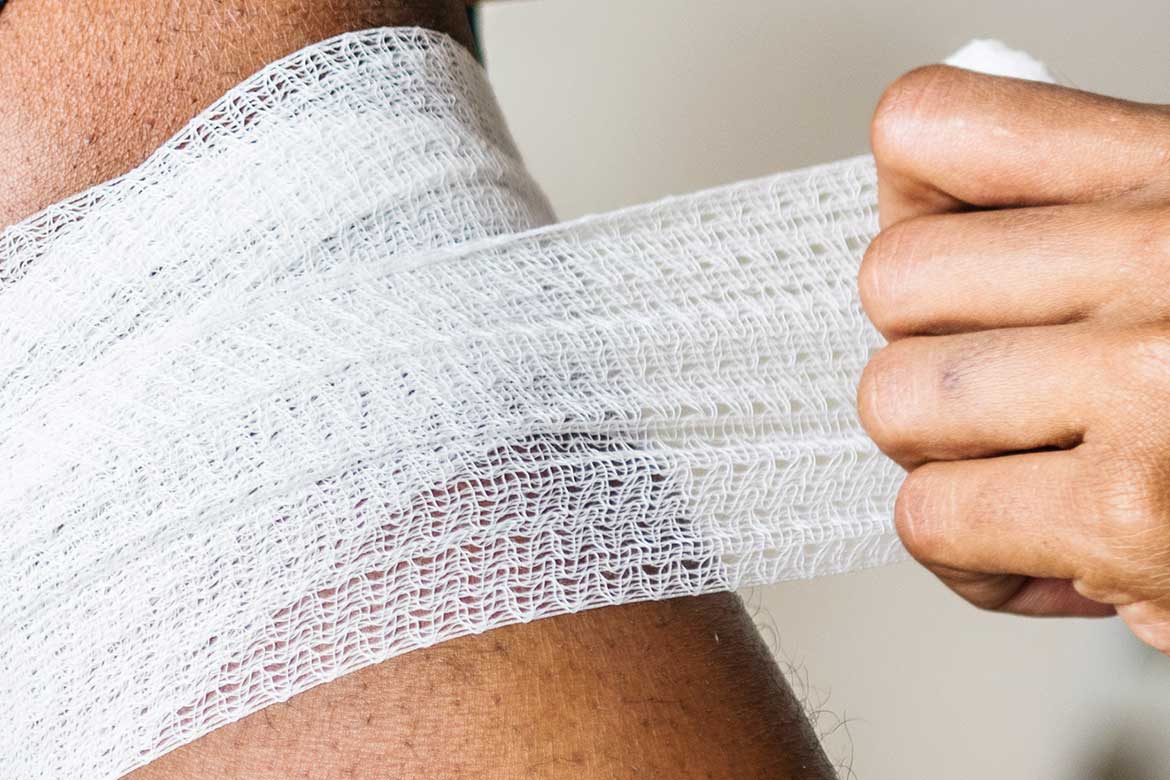9th July, 2025
7 Quick And Easy Working From Home Health And Safety Tips
More of us are working from home than ever. For some, it might be temporary or a few days a month. For others, it may be a more full-time home working arrangement. Either way, it's essential to look after our mental and physical health, and our safety, when working from home. Here are 7 quick and easy health and safety tips.

With the rise in technology and the internet, it's becoming more possible (and more popular) to work from home. You can skip the commute, saving you time and money.
Not every job can be done from home - unless you have a manufacturing facility in your bedroom, we tend to carry out lower-risk work activities from home. Things we can do from a computer or desk, including office-based tasks like administration, customer support, filling in spreadsheets, writing letters, using software, creating software, answering calls, video meetings etc.
Working from home is usually for talks that are desktop-based and can easily be done remotely, without much supervision.
So if you're thinking that the risks when working from home would be more or less the same as the risks you had when you were sat in the office, you would be mostly right. Because the task hasn't changed. And you haven't changed.
But your environment has.

And while you are working from your home, the place you probably feel the most comfortable (and it's probably the only place you could get away with working in your pyjamas - not that it's a good habit to get into!), there are some new challenges you face when home working.
You're not in the office any more.
Depending on your home environment, that could mean fewer distractions or more distractions.
You might be alone now, maybe not virtually (hello Zoom, Slack, Whatsapp, Teams, Hangouts and a zillion other video and messaging platforms), but physically. Feelings of isolation as you adjust to your new workplace are not uncommon.
And you might not be in a dedicated work environment anymore. Especially if you're working from home temporarily - which is the case for many home workers. So if you're working from your kitchen table, or the corner of your bedroom, you might be feeling a little restricted.
Whether you prefer working from home or miss the office when you're not there, here are 7 quick and easy working-from-home tips to maintain your health and safety.
1. Stay Social
Quick Tip: Set up regular communication with colleagues.
When we first wrote this post, we were at the height of a pandemic, and it was good to be physically isolated. But even when you need to be away from people or your workplace for a time, it's not nice to feel mentally isolated.
If your work involves lots of video meetings, calls with colleagues and clients, and email or chat, you might not feel isolated at all when working from home. But if you are working on solo tasks, handling customer support, or dealing with work issues alone at home, it's easy to get overwhelmed.
At the office, you have colleagues you can ask for advice when you have a difficult question or if you have a problem. Not having that immediate support network for hard work tasks can create worry and anxiety.
To reduce work stress when working from home, you can create regular check-ins, or set up a group chat, to communicate with colleagues or managers. This is a great way to share advice, get help, or even just ask how people are coping.
Done right, establishing communication channels helps homeworkers stay productive and reduces stress.

2. Reduce Distractions
Quick Tip: Try to eliminate any noise or distractions that will create stress.
Working from home can be great for reducing distractions. No more office politics, and now you control the heating and lighting. You can even put on some relaxing music if it helps you work. Everything in your work-from-home environment can be just how you like it.
But your home can also be full of distractions. Parcel deliveries, family members, visitors, children, pets, neighbours, etc.
If you can, put yourself in a quiet part of the house, away from distractions, and temptations. Try not to be in a room with a TV, or where you can hear someone else watching the TV. And move any chores like washing, ironing, or other housework, out of view. That way, you can focus on your work, and deal with the other stuff later.
3. Set Yourself Up
Quick Tip: Get your workstation set up so that you can work comfortably.
Working from bed sure does sound appealing, especially on a cold winter morning when you are all toasty under the covers. But being hunched up over your laptop or tablet all day will soon give you back pain and neck aches. Not as enjoyable as it first sounded!
You might not need to carry out a DSE assessment if you are only working from home temporarily, but it's still a good idea. And if you are working from home on a long-term basis, you will need a properly assessed workstation. It's a legal requirement.

4. Keep Tidy
Quick Tip: Make sure cables and equipment don't create a trip hazard.
Don't let a messy work area trip you up - literally! Your work-at-home environment might be temporary, but you don't want it to impact your home or work life negatively.
When you set up your work area, even if it's one you have to put away at the end of each day, consider any trip hazards you might be creating. Trailing cables on the floor, a box of files, the shredder, it could all trip you, or someone in your family, up if left lying about.
5. Take Breaks
Quick Tip: Take a break from the screen at least every hour.
While some people think home workers 'have it easy', you might actually be less likely to take breaks when working from home.
In an office, you might move about to talk to a colleague - or go to a meeting room. But at home your meetings, communication with the team, and your work, it's all done from the same place. Probably online. There's a risk you could sit staring at the same screen all day, for all of your tasks and communication.
Make sure you take regular 5-minute breaks from looking at the screen, to avoid eye fatigue and strain. Look out the window at a distant object, and blink regularly to look after your eyes.

6. Keep Moving
Quick Tip: Regularly stretching and exercising stops you from getting static.
Talking about breaks, they're not just good for your eyes. Sitting for long periods is bad for you. It's known to slow down your metabolism, which is linked to weight gain, diabetes and some types of cancer. Of course, this is a risk in any desk-based job and not just when working from home. But homeworkers often rely on their workspace for all work interactions, so it's extra important to move regularly.
- Think about tasks or activities you could do standing
- Regularly change posture
- Go for a short walk on your breaks
- Take phone calls standing up
- Break up work tasks to prevent prolonged periods of sitting in one position
- Set a reminder to get up or move at least every hour
- Do some exercises at your desk when your reminder goes off
- Stand up and move around when making phone calls if you don't need to be at the screen
7. Avoid Risks
Quick Tip: Complete a working from home risk assessment.
Homeworkers shouldn't be expected to take additional risks. They are often alone and would be unable to ask for help if they get into difficulties. So remember to check that the work you are expected to carry out from home has been assessed and is safe, with any controls in place as necessary to reduce the risk.
As an employer, you have the same health and safety responsibilities for home workers as for any other workers.
Lone working is legal, but if people are on their own, there are often additional controls you need to put in place to make sure they remain safe.
If you or your team are working from home, stay safe and healthy by managing the risks and keeping in contact. Use the working from home risk assessment template to help you assess the risks.
This article was written by Emma at HASpod. Emma has over 10 years experience in health and safety and BSc (Hons) Construction Management. She is NEBOSH qualified and Tech IOSH.
Better health and safety...
We are here to help you and your business put safety in everything.
Learn MoreRecent posts like this...

HSE Fee For Intervention Charges Explained
FFI stands for 'fee for intervention', which was introduced under the Health and Safety (Fees) Regulations 2012. FFI aims to recover the HSE's costs, including inspection, investigation and enforcement action, charging businesses that are in breach of health and safety regulations.
Read Post
How To Plan For Better Health And Safety At Work
If you want better health and safety, you need to plan for it. And who doesn't want to stay safer and have fewer accidents and ill health in their workplace? In this blog post, we look at how to plan for better health and safety at work.
Read Post
No Injuries, No Health And Safety Problems!?
It's been over a year since the last injury in your workplace. But just because you haven't had any accidents doesn't mean you are safe or that your health and safety performance is good. Your accident reporting system might just be hiding the truth. No injuries, no problems!? Don't count on it.
Read Post